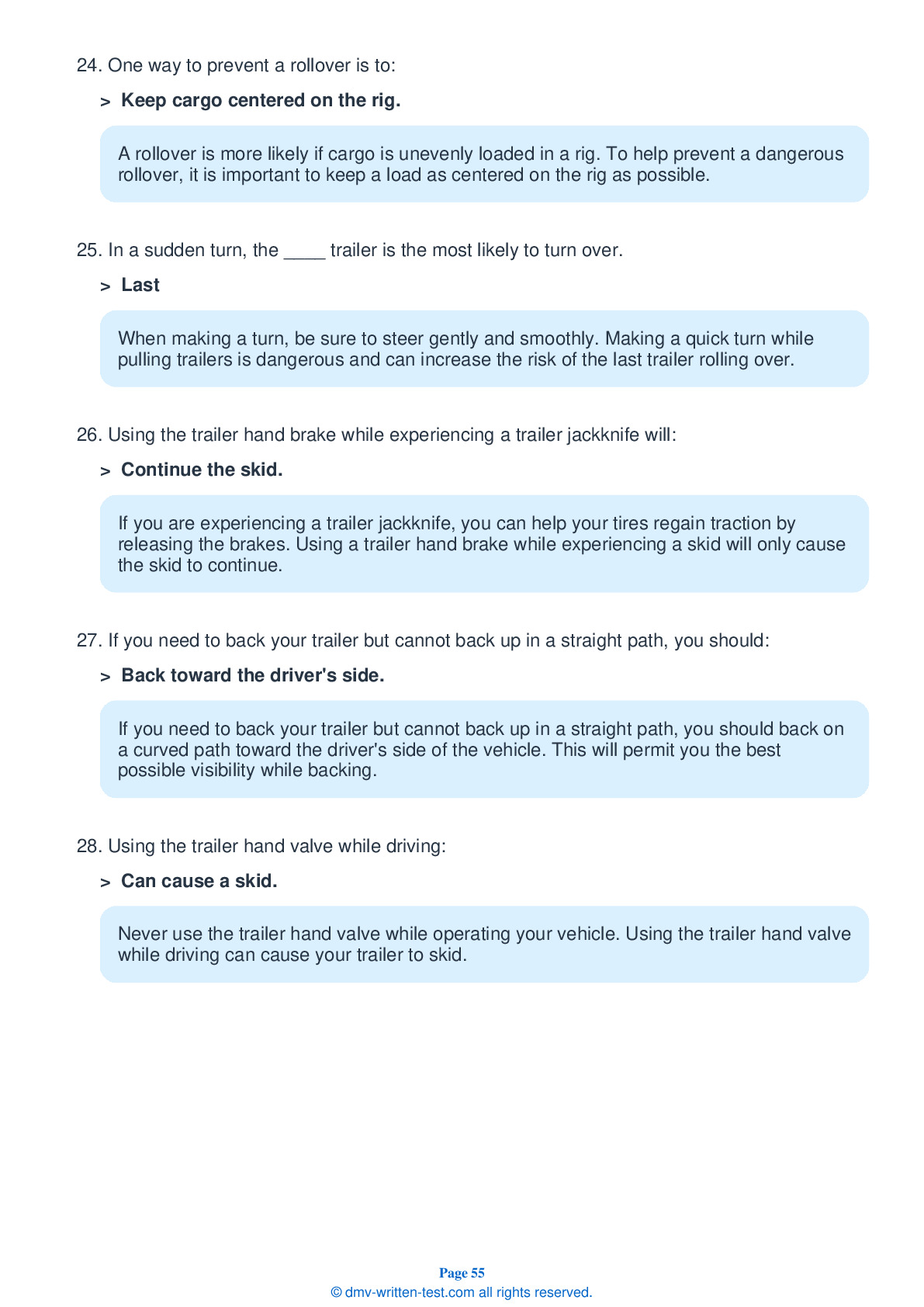Air Brakes
This endorsement is required for driving a vehicle with air brakes. To receive this endorsement, applicants must pass a written test. The test consists of 25 multiple choice questions. Each question has two, three or four answer choices. To pass, the applicant must answer at least 20 questions correctly. Test questions come from the Utah Commercial Driver License Handbook. Questions come from the chapter covering: Air Brakes. The Air Brakes endorsement may be used with the Class A, B or C CDL.
Number of Question
Passing Score
1. If the safety relief valve in an air brake system is releasing air:
Explanation
The safety relief valve in an air brake system releases air if necessary to prevent pressure in the system from becoming too high. If the valve starts releasing air, there is something wrong. Have a mechanic fix the problem.
2. What must be on an air tank in an air-braked vehicle?
Explanation
All air tanks on air-braked vehicles must have one-way check valves located between the air compressor and the first reservoir. This prevents air from flowing out in the event of a leak.
3. What is removed when an air tank is drained?
Explanation
In an air brake system, the air storage tanks are equipped with drains to allow water and compressor oil to be removed. The water and oil can damage the brakes if left to accumulate in the system.
4. When the spring brakes are on, you should never:
Explanation
Never push down the brake pedal while the spring brakes are activated. The combined force of springs and air pressure could damage the brakes.
5. Emergency brakes:
Explanation
All trucks, truck tractors, and buses must be equipped with emergency brakes and parking brakes. These brakes must be held by mechanical force.
6. What happens if brakes become too hot?
Explanation




